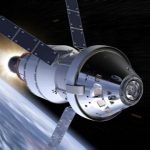European Space Agency’s Euclid telescope captures breathtaking snapshots of spiral and elliptical galaxies along with stars in the dark universe.
The Euclid telescope has achieved a significant milestone by capturing its first-ever images of the elusive dark universe. Launched on July 1 from Cape Canaveral, Euclid is a pioneering European mission dedicated to studying the mysteries of the dark cosmos. These initial test images have dazzled scientists with their stunning display of spiral and elliptical galaxies, distant stars, and stellar clusters.
Comprising two cutting-edge scientific instruments, the Euclid telescope is equipped with a visible wavelength camera (VIS) and a near-infrared spectrometer and photometer (NISP). These instruments have been employed to verify their flawless functioning and gather valuable data for future research.
Although not yet fully calibrated, @ESA_Euclid delivers stunning first test images 👏
The mesmerising results indicate that #ESAEuclid will achieve the scientific goals that it has been designed for – and possibly much more.
👉https://t.co/ef29ZjHvaB pic.twitter.com/60gfB48p5K
— ESA Science (@esascience) July 31, 2023
The VIS, with its supernitid imaging capabilities, is poised to capture billions of galaxies to precisely measure their shapes. In an intriguing observation, the first image already hints at the abundance of data that the VIS will provide. While some galaxies are easily detectable, many others remain obscured among the stars, eagerly awaiting Euclid to unveil their secrets in the forthcoming investigations, as stated in a press release by the European Space Agency (ESA).
Also Read: NASA Successfully Conducts First Simulation for Moon Mission Artemis II
The process leading to these remarkable images was not without its challenges. During the initial activation of the instrument, the Euclid team encountered an unexpected pattern of light contamination in the images. The subsequent investigation revealed that some sunlight had found its way into the spacecraft, likely through a small aperture. However, a clever maneuvering of Euclid allowed the team to mitigate this issue, enabling the VIS to fulfill its mission accurately.
The second instrument, NISP, holds a dual function of capturing galaxies in infrared light and measuring the amount of light they emit at various wavelengths. This unique feature facilitates the direct calculation of the distance to each galaxy.
By amalgamating distance information from NISP with the shape data acquired by VIS, scientists will be able to construct a 3D map of galaxy distribution and understand how this distribution evolves over time. Ultimately, this intricate 3D map will unlock crucial insights into the enigmatic realms of dark matter and dark energy, responsible for the universe’s accelerating expansion.
Despite being test images, some artifacts, such as straight-line cosmic rays, remain visible due to limited processing. Nevertheless, the team remains enthusiastic about the potential of Euclid’s future observations.
Also Read: Mysterious Object Found on Remote Beach in WA Sparks Investigations
Giuseppe Racca, the project director, expressed his excitement, saying, “After more than 11 years of design and development of Euclid, it is stimulating and profoundly emotional to witness these first images. To think that what we see here is only a glimpse of the vast galaxies out there, captured with minimal adjustments to the system, is truly incredible.”
Once fully calibrated, Euclid will embark on an unprecedented mission to observe billions of galaxies, creating the most extensive 3D map of the sky ever conceived.
The Euclid mission promises to revolutionize our understanding of the dark universe, shedding light on the most profound questions about its composition, evolution, and future. As researchers eagerly await the influx of groundbreaking data from Euclid, the world anticipates the next revelation from this remarkable space endeavor.

We are the founders of Techspurblog and we have been in this industry for over Four years. We pride ourselves on being the global leader in developing Technology Blog, which can create original content.
We are a team of enthusiastic people who want to share our experience, knowledge and enterprise with the world. We love what we do and we hope you will too!





